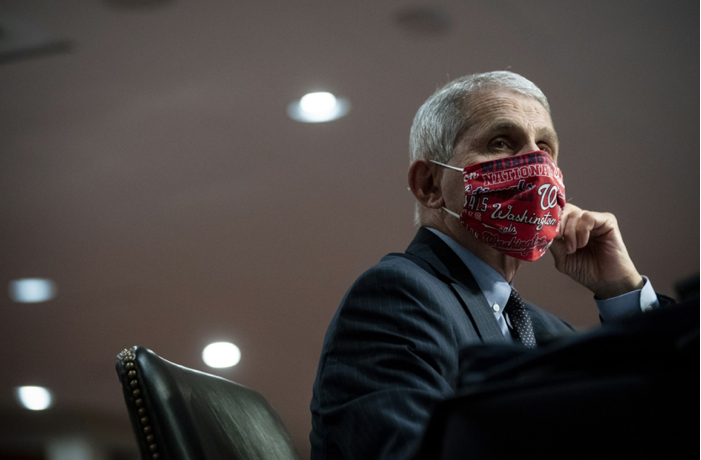Comments
CORONA WATCH--On Tuesday, Anthony Fauci sat in a Senate hearing room that had been reconfigured for social distancing and listened, mask at hand, as Patty Murray, of Washington, described the consequences of America’s failure to manage its pandemic. The tally of cases was soaring in a majority of states, particularly in the South and West; Murray, speaking by video, quoted a C.D.C. official who had warned that there was “too much virus to control in the U.S.” Murray stated the obvious: “Our strategy hasn’t worked.” What, she asked, did the federal and state governments need to do to turn the numbers around?
“I am also quite concerned,” Fauci replied. He reeled off some of the statistics that Murray had alluded to—“surges” in Arizona, California, Florida, and Texas alone, he said, accounted for half of the new confirmed cases, which now amount to more than forty thousand a day. Later in his testimony, in answer to a question from Elizabeth Warren, of Massachusetts, Fauci said that he would not be surprised if the number of new cases reached a hundred thousand a day. (He declined to make a guess as to how many deaths that would amount to.) Perhaps, Fauci added, some states had reopened “too quickly”; even in ones where the governors and mayors had acted properly, he had seen “in clips and in photographs . . . individuals in the community doing an ‘all or none’ phenomenon”—by which he meant “either be locked down or open up in a way where you see people at bars, not wearing masks, not avoiding crowds, not paying attention to physical distancing.” To halt the pandemic, Fauci said, “I think we need to emphasize the responsibility that we have both as individuals and as part of a societal effort.”
Fauci is, of course, right about personal responsibility; everyone has a role to play in stopping the coronavirus. But he was less clear about how that rallying cry fits into any federal or even state-government public-health strategy. The great cause of confusion is that we have, at the moment, an all-or-none President, whose exercise of personal or political responsibility in dealing with this crisis is around the level of zero. At times, it sounded as though Fauci had pretty much given up on Donald Trump, and had no option left but to appeal directly to the American people. He could only hope that they would pay attention to his warnings rather than to Trump’s tweets mocking people who wear masks, or the clips and photographs of the people in the crowd, very few of them wearing masks, at the President’s indoor events. (At a rally in Tulsa, campaign workers reportedly removed labels encouraging social distancing from seats.)
That disconnect was not lost on Murray, who followed up by saying, “I assume that would mean that elected and community leaders need to model good public-health behavior and wear a mask.” Fauci, rather than simply saying yes, repeated the C.D.C.’s mask recommendations—wear one in public areas and crowded spaces. It is a depressing commentary on how distorted the Administration’s response has been that Fauci might regard a straightforward statement about what leaders should do as a matter to be handled delicately. (Read the rest.)
-cw








